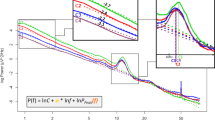Abstract.
The hypothesis that cardiac rhythms are associated with chaotic dynamics implicating a healthy flexibility has motivated the investigation of continuous ECG with methods of nonlinear system theory. Sleep is known to be associated with modulations of the sympathetic and parasympathetic control of cardiac dynamics. Thus, the differentiation of ECG signals recorded during different sleep stages can serve to determine the usefulness of nonlinear measures in discriminating ECG states in general. For this purpose the following six nonlinear measures were implemented: correlation dimension D2, Lyapunov exponent L1. Kolmogorov entropy K2, as well as three measures derived from the analysis of unstable periodic orbits. Results of this study show that continuous ECG signals can be differentiated from linear stochastic surrogates by each of the nonlinear measures. The most significant finding with respect to the sleep-related differentiation of ECG signals is an increase in dominant chaoticity assessed by L1 and a reduction in the degrees of freedom estimated by D2 during REM sleep compared to slow wave sleep. Our findings suggest that the increase in dominant chaoticity during REM sleep with regard to time-continuous nonlinear analysis is comparable to an increased heart rate variability. The reduction in the correlation dimension may be interpreted as an expression of the withdrawal of respiratory influences during REM sleep.
Similar content being viewed by others
Author information
Authors and Affiliations
Additional information
Received: 7 June 1999 / Accepted in revised form: 10 December 1999
Rights and permissions
About this article
Cite this article
Fell, J., Mann, K., Röschke, J. et al. Nonlinear analysis of continuous ECG during sleep II. Dynamical measures. Biol Cybern 82, 485–491 (2000). https://doi.org/10.1007/s004220050601
Issue Date:
DOI: https://doi.org/10.1007/s004220050601




